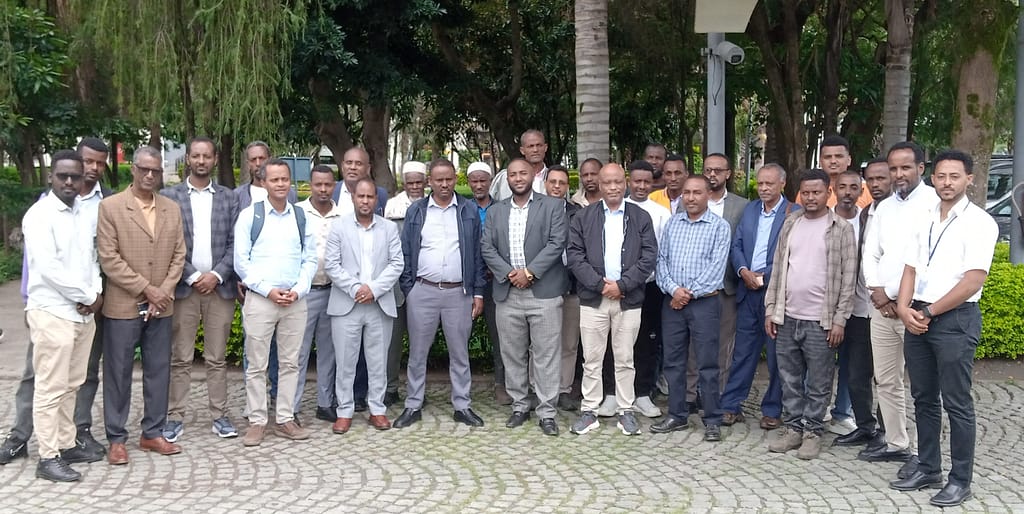By Yonas Tafesse & Amare Haileslassie

Ethiopia’s agriculture sector is dominated by over 15 million smallholders producing about 95 percent of the national agricultural production mainly through rain-fed agriculture. Despite this, the sector is characterized by poor performance because of rainfall variability, climate change and weak adoption of agricultural technologies.
There are several barriers confronting smallholder farmers including access to financing mechanisms to secure irrigation technologies, well-developed agricultural value chains and services, as well as access to information that influences the overall adoption of technologies.
A study by the International Water Management Institute (IWMI) has suggested that solar-powered irrigation helps sustainable farming of crops and increases local food production, reducing reliance on costly and unreliable food purchases. It further indicated that the practice needs to be complemented by agricultural technologies bundling for maximizing impacts: Intercropping, row planting, crop rotation, improved seeds, chemical fertilizer, organic fertilizers and agrochemicals.
Financing solar-powered irrigation contributes to food security
IWMI and partners organized a consultative workshop on the advantages and disadvantages of solar-based irrigation technology and ways of improving collaborative arrangements among stakeholders. They include financial institutions, farmers, government sector offices, local administrative bodies and solar pump suppliers for scaling out the technologies. The dialogue was supported by evidence on how solar pumps impact poverty, nutritional diversity and farmers’ income based on studies from previously implemented solar pump irrigation activities.
In his opening remarks, Elias Awol, Chief Executive Officer for Smallholder Irrigation Development with the Ministry of Agriculture (MoA), said: “Ethiopia’s government has set ambitious plans to significantly enhance the agricultural productivity, food security and income of smallholder farmers through public-private partnership modalities for the widespread adoption of solar pump-based irrigation”. He added that the consultative workshop was very instrumental in nurturing open and well-informed dialogue among farmers, financial institutions, technology suppliers, decision-makers and development actors.
Attended by nearly 40 key stakeholders, the workshop featured research presentations, group discussions, lively information exchanges and the provision of solar pumps to selected model farmers through a cost-sharing approach. The workshop was co-funded by the Nature-based Solutions program and the CGIAR Initiative on Diversification in East and Southern Africa.
Workshop delegates also acknowledged that Ethiopia has huge irrigation potential and that the initial investment required is a challenge for large numbers of smallholder farmers whenever they consider purchasing solar pumps. They also emphasized that financing mechanisms—partnerships among government, NGOs, private sector and financial institutions—must be established so that farmers can adopt climate-friendly and reliable agricultural innovations. This would help to meet their food security needs and realize the national agenda of agricultural productivity.
“We are happy to announce that 40 model farmers from four districts of the Sidama, Central Ethiopia, and Oromia regions have received solar-powered technologies through a cost-sharing mechanism with a view to advancing their farming practices,” said Amare Hailesellasie, Principal Researcher with IWMI East Africa. He added that IWMI’s role is coordinating the PPP dialogues and payment of 25% of the cost of solar pumps to encourage farmers to invest and adopt the technology.
The financing is made possible through an agreement with Green Scene Energy PLC, a supplier of solar-powered technologies, VisionFund Microfinance Institution, a financial services provider, and district agricultural offices. According to the agreement, a beneficiary farmer and IWMI cover 25% each for a solar pump while accessing 50% of the money from the microfinance institute.
“The pumps we offer are very effective for farming 0.25 hectares of land multiple times per year,” said Biniam Tufa, Deputy Director of Green Scene Energy.
Aman Gemeda, from Adami Tulu Gido Kombolcha District of the Oromia Region, added that “There is no question that my agricultural activity will significantly transform to a larger scale and getting enough food and ample income for my family will not be a problem anymore”.

IWMI provides viable solutions for smallholder farming challenges
Since 2016, IWMI and partners have developed viable solutions for addressing the poor performance of smallholder agriculture including business model development and promotion, piloting green economy projects, bundling agricultural inputs and services and providing capacity-building training on solar-powered irrigation technologies.
An IWMI-commissioned research report defined three business models for solar-powered irrigation: individual purchase, out-grower or insurer scheme and supplier model with bundled financing. The individual purchase model was the most favored one, attracting some farmers in the regions where IWMI runs projects.
Another intervention piloted solar pumps through the Growth for the Future (G4F) project, distributing 30 solar-powered technologies to model farmers in selected districts of the Oromia and Central Ethiopia regions. These donations were instrumental in improving the food security and income of the model farmers in very limited locations. This means that there has been a gap in promoting good practices and out-scaling of the technologies in areas where they are much need.









